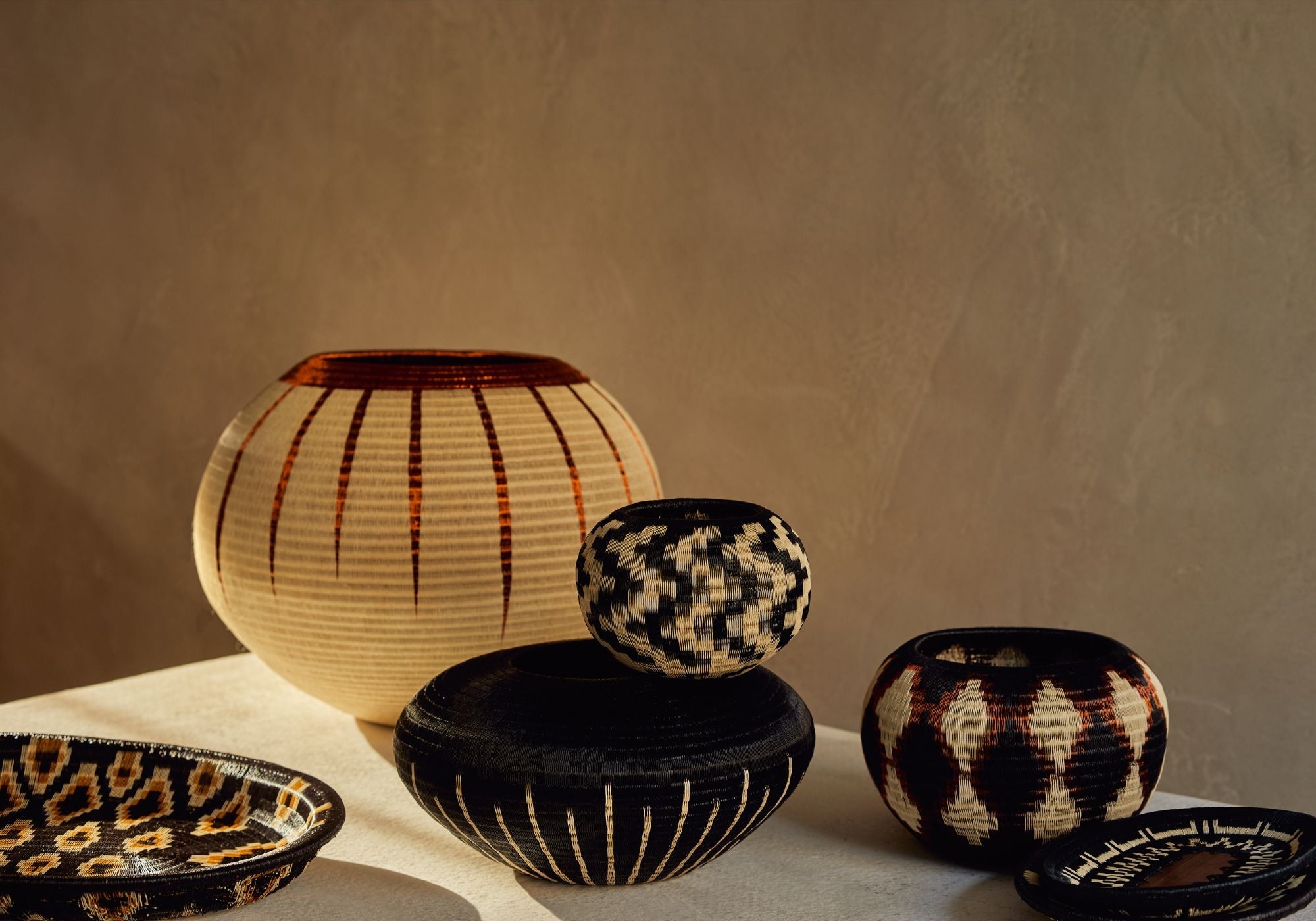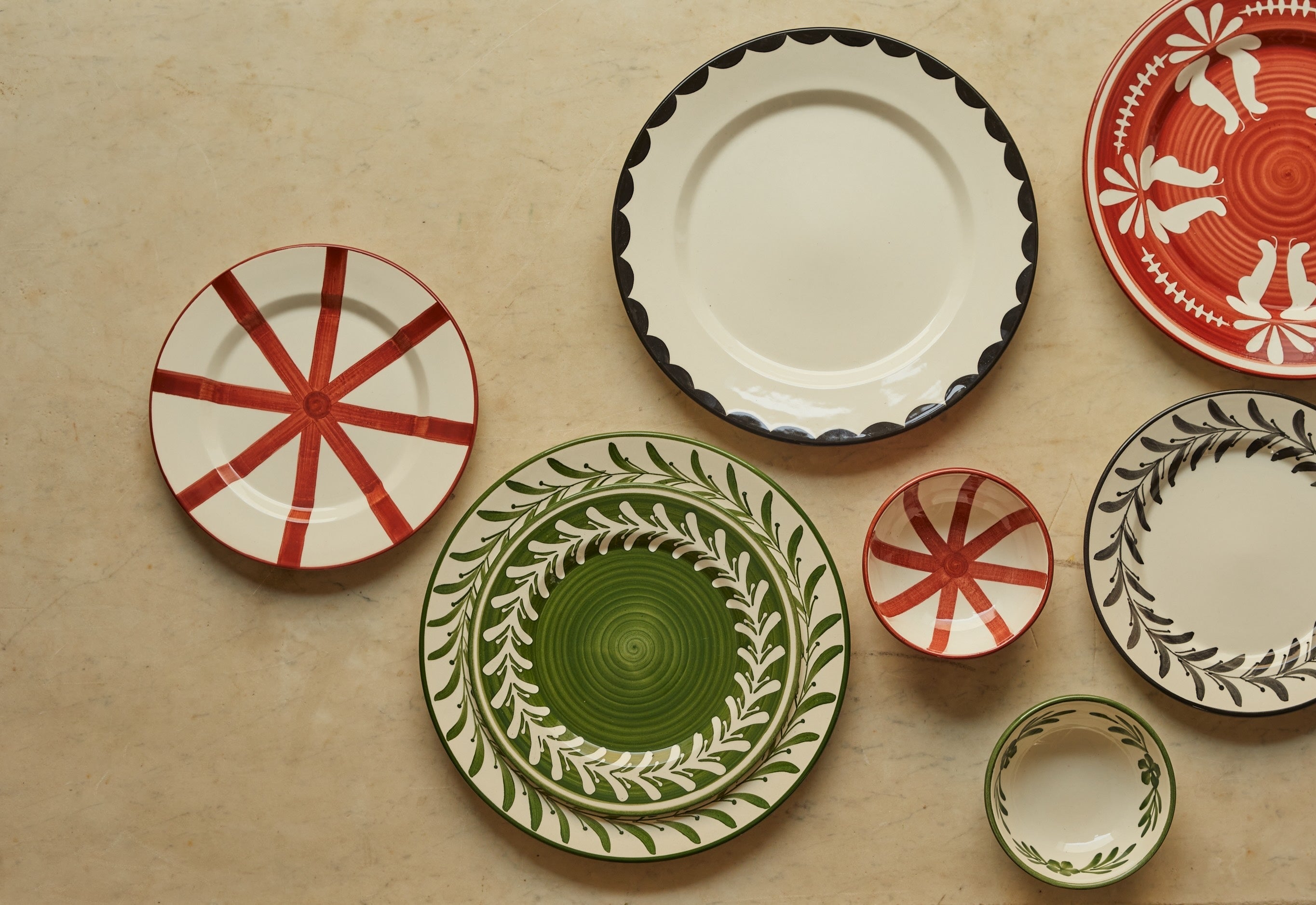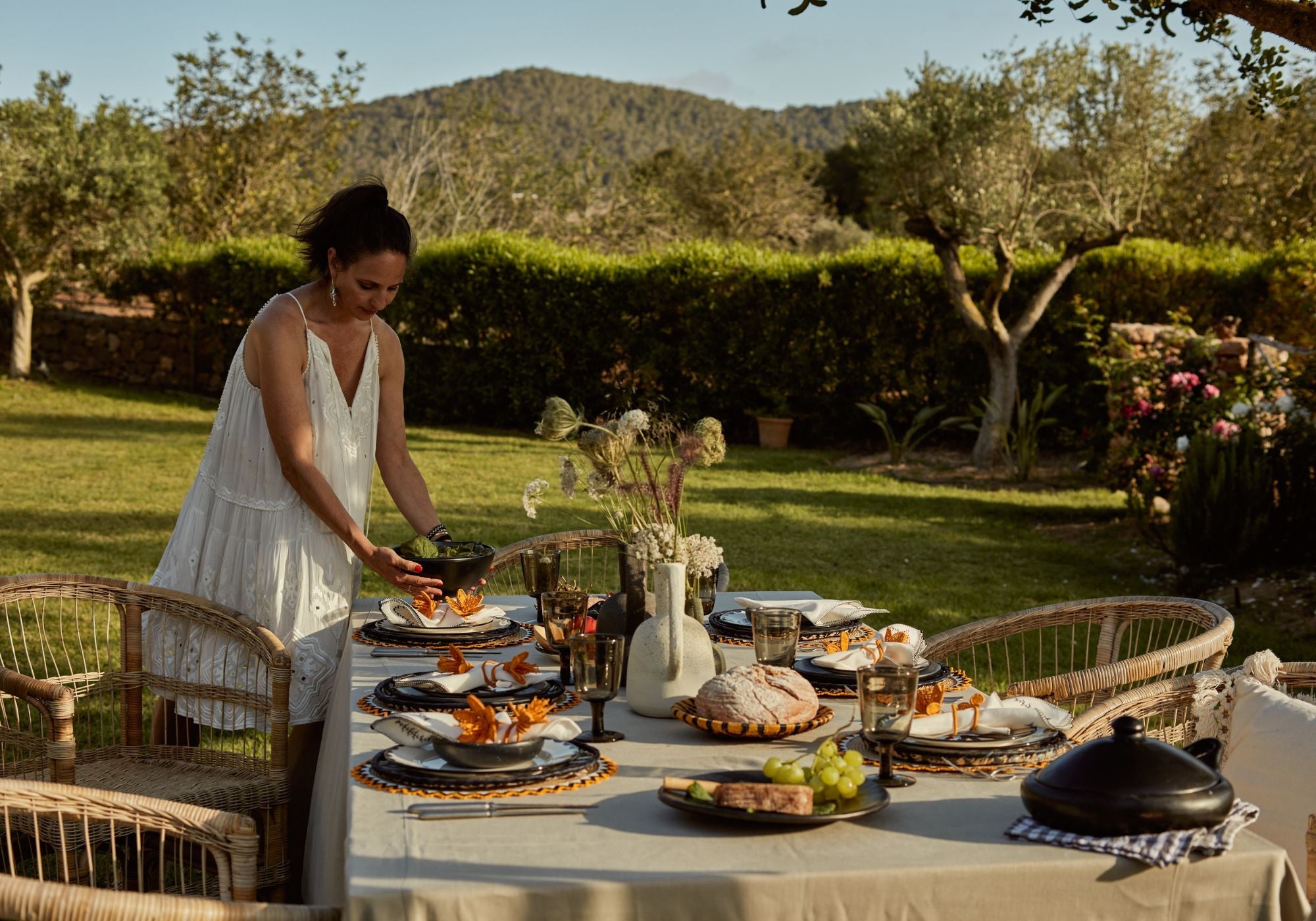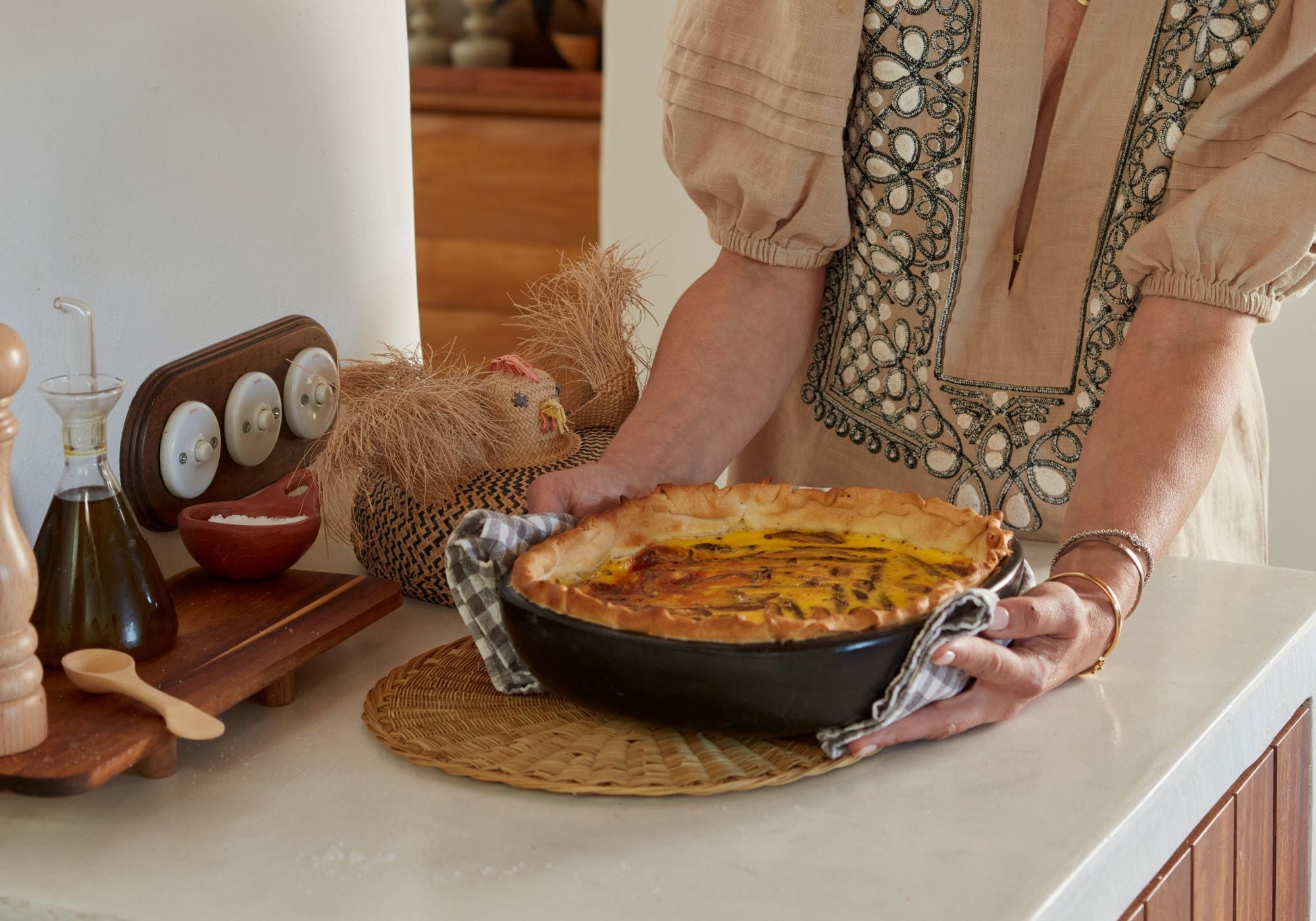
Exquisite Craftsmanship: Exploring the Artistry of Werregue
Step into the fascinating world of Werregue, where intricate craftsmanship meets the rich tapestry of Colombian artistry. With its origins dating back centuries, Werregue is a traditional craft that continues to captivate with its exquisite beauty and cultural significance. In this article, we will delve deep into the artistry of Werregue, unravelling the secrets behind its meticulous creation process and exploring the stories woven into each piece. The Artisans, who are primarily indigenous Wounaan and Emberá people, employ honoured techniques passed down through generations to transform raw materials into stunning works of art. The art form encompasses intricate woven baskets, jewellery, masks, and sculptures, all crafted from the fibres of the Werregue palm tree. Through their skilled hands and keen eye for detail, these artists breathe life into their creations, infusing them with vibrant colours, intricate patterns, and deep symbolism. Each piece is a testament to the artist's creativity and dedication, making Werregue a true emblem of indigenous art. Join us on this captivating journey as we unravel the fascinating world of Werregue, celebrating the talent and craftsmanship of these exceptional artisans. Discover the beauty that lies within each creation and the cultural heritage that continues to thrive through this remarkable art form.

History and Origins of Werregue Craftsmanship
The art of Werregue weaving has its roots deeply embedded in the rich cultural heritage of Colombia's indigenous communities, primarily the Wounaan and Emberá peoples. This intricate craft can be traced back centuries, with evidence suggesting that the Wounaan and Emberá have been harnessing the natural fibers of the Werregue palm tree to create stunning works of art for generations.
The Werregue palm, known botanically as Astrocaryum standleyanum, is a resilient and versatile plant that thrives in the lush tropical forests of the Pacific region of Colombia. For the indigenous artisans, the Werregue palm has long been a vital resource, providing not only the raw materials for their craft but also serving as a source of sustenance and cultural significance.
The art of Werregue weaving is believed to have originated as a practical necessity, with the indigenous communities using the durable and flexible Werregue fibres to create functional items such as baskets, mats, and containers. The weave so tight that these baskets were traditionally used to transport water.
Over time, however, the craft evolved, and the artisans began to infuse their creations with intricate designs, vibrant colours, and deep symbolism, transforming the practical into the extraordinary.

The Unique Characteristics of Werregue Art
Werregue art is a testament to the exceptional skill and creativity of the indigenous artisans who create it. Each piece is a unique and captivating work of art, with its own distinct characteristics and cultural significance.
One of the most striking features of Werregue art is the use of color. The artisans skillfully dye the Werregue fibers using a range of natural pigments derived from plants, minerals, and even insects. The resulting palette of hues is both vibrant and sophisticated, with shades of red, yellow, blue, and green often woven together to create intricate patterns and designs.
Another defining characteristic of Werregue art is the intricate weaving techniques employed by the artisans. The process of transforming the raw Werregue fibers into intricate baskets, jewelry, and sculptures requires a deep understanding of the material and a mastery of traditional weaving methods. The artisans use a range of techniques, including coiling, twining, and plaiting, to create the distinctive patterns and textures that are the hallmark of Werregue art.
Beyond the technical aspects, Werregue art is also deeply rooted in the cultural and spiritual beliefs of the indigenous communities. The designs and motifs often incorporate symbols and imagery that hold profound meaning, reflecting the artisans' connection to the natural world, their ancestral traditions, and their sense of identity. Watch our Conversation with master weaver Fanny Ismare.
Techniques and Tools Used in Werregue Weaving
The creation of Werregue art is a labour-intensive and meticulous process that requires a deep understanding of the material and the mastery of traditional weaving techniques. The artisans who create these exquisite works of art possess a wealth of knowledge and skills that have been passed down through generations.
At the heart of the Werregue weaving process is the harvesting and preparation of the raw materials. The Werregue palm tree is carefully selected, and its long, flexible fibres are carefully extracted and sorted according to their thickness and quality. The artisans then use a range of natural dyes to colour the fibres, often using a combination of plant-based pigments and other natural materials to achieve the desired hues.
Once the fibres are prepared, the artisans begin the intricate process of weaving. Using a range of traditional tools, such as wooden needles, bone shuttles, and handmade looms, they skillfully manipulate the fibers, creating the distinctive patterns and textures that define Werregue art. The weaving process is often a communal activity, with artisans working together to create large-scale pieces, such as ceremonial masks and intricate baskets.
The level of precision and attention to detail required in Werregue weaving is truly remarkable. Each stitch, each twist, and each turn of the fibres must be executed with the utmost care and precision to ensure the structural integrity and aesthetic beauty of the final product. The artisans' hands move with a deftness and fluidity that can only be achieved through years of dedicated practice and the passing down of traditional knowledge.


The Significance and Symbolism in Werregue Designs
Werregue art is not merely a collection of beautiful objects; it is a tapestry of cultural significance, woven with the rich symbolism and ancestral traditions of the indigenous communities that create it. Every design, every pattern, and every motif holds a deeper meaning, reflecting the artisans' deep connection to the natural world and their unique worldview.
One of the most prominent symbols in this art form is the representation of the natural world. The artisans often incorporate images of animals, plants, and natural phenomena into their designs, using these elements to convey their reverence for the environment and their belief in the interconnectedness of all living things. The intricate patterns and geometric designs found in Werregue art are also believed to represent the artisans' understanding of the cyclical nature of life and the harmonious balance of the universe.
Another significant aspect of Werregue art is the way it reflects the cultural and spiritual beliefs of the indigenous communities. Many of the designs and motifs found in Werregue art are imbued with symbolic meaning, representing important aspects of the artisans' cultural heritage, such as their creation stories, their ancestral lineages, and their rituals and ceremonies.
For the Wounaan and Emberá people, Werregue art is not just a means of creative expression; it is a way of preserving and passing down their cultural identity. Each piece is a testament to the artisans' deep connection to their land, their ancestors, and their way of life. By weaving these cultural narratives into their art, the artisans ensure that the rich traditions and beliefs of their communities continue to be celebrated and honoured for generations to come. Watch our interview with
The Cultural Importance of Werregue in Indigenous Communities
Werregue art is not just a remarkable display of craftsmanship; it is a vital component of the cultural identity and traditional practices of the indigenous communities that create it. For the Wounaan and Emberá people, Werregue weaving is a deeply meaningful and revered art form that is woven into the fabric of their daily lives and their ancestral traditions.
At the heart of the cultural significance of Werregue art is the way it serves as a means of preserving and transmitting the knowledge, skills, and beliefs of the indigenous communities. The art form is not just a creative outlet; it is a living repository of the communities' cultural heritage, with each piece serving as a tangible representation of their ancestral traditions and their connection to the natural world.
The process of creating Werregue art is also deeply rooted in the communities' social and spiritual practices. In many indigenous communities, the creation of Werregue pieces is a communal activity, with artisans working together to produce large-scale works that are used in ceremonial and ritual contexts. These collaborative efforts not only foster a sense of community and shared identity but also serve as a means of passing down the traditional knowledge and techniques that are essential to the art form.
Beyond its role in preserving cultural heritage, Werregue art also serves as a means of economic empowerment for the indigenous communities that create it. Many Wounaan and Emberá artisans rely on the sale of their Werregue creations as a source of income, allowing them to support their families and maintain their traditional way of life. By promoting and supporting the continued production of Werregue art, these communities are able to assert their cultural sovereignty and ensure the longevity of their artistic traditions


Contemporary Adaptations of Werregue Art
While the traditional techniques and designs of Werregue art have remained largely unchanged over the centuries, the art form has also evolved to adapt to the changing needs and preferences of contemporary audiences. As Werregue art has gained recognition on the global stage, artisans have begun to experiment with new techniques and incorporate modern elements into their creations, while still maintaining the core principles and cultural significance of the craft.
One of the most notable contemporary adaptations of Werregue art is the incorporation of new materials and techniques. While the Werregue palm fiber remains the primary raw material used in the creation of Werregue art, some artisans have begun to experiment with the use of metalic wires, such as copper. These new materials allow the artisans to create a wider range of products, from intricate jewelry to large-scale sculptures, while still adhering to the traditional weaving methods that define the Werregue aesthetic.
Another way in which Werregue art has adapted to contemporary trends is through the exploration of new design elements and motifs. While the traditional symbols and patterns of Werregue art continue to be celebrated and incorporated into modern pieces, some artisans have also begun to experiment with more abstract and contemporary designs, blending the rich cultural heritage of the craft with modern sensibilities and aesthetic preferences.
Despite these adaptations, the core values and cultural significance of Werregue art remain firmly intact. The artisans who create these contemporary pieces are deeply committed to preserving the traditional techniques and ancestral knowledge that have been passed down through generations, ensuring that the art form continues to be a living, breathing representation of the indigenous communities' cultural identity and heritage.

Where to Find and Purchase Werregue Products
As the global appreciation for Werregue art continues to grow, there are now more opportunities than ever for individuals to discover and acquire these exquisite works of art. Whether you're looking to add a unique piece to your home decor or to support the livelihoods of indigenous artisans.
One of the most direct ways to acquire Werregue art is by visiting the indigenous communities themselves, where you can engage directly with the artisans and purchase their creations. Many Wounaan and Emberá communities have established cooperative workshops and artisan markets, where visitors can browse a wide range of Werregue products, from intricate baskets and jewellery to stunning masks and sculptures. This guantees that you acquire an authentic Werregue piece, and that you are contributing directly to the community.
However, for most travelling to the communities is not an option. A range of rouge dealers have emerged, selling 'fake' Werregue - made with cheaper materials and exploiting the communities. At CasaLatina we work directly with the artisans in the indigenous communities - curating a selection of the highest quality and most beautiful pieces. More importantly, we have an unwavering commitment to fair trade ensuring that this the artisans are fairly compensated for their craft. Read all about our mission and responsible commitments here.
Regardless of where you choose to purchase your Werregue art, it is important to remember that each piece is a unique and deeply meaningful creation, imbued with the artistry, skill, and cultural significance of the indigenous communities that produce them. By supporting the continued production and preservation of Werregue craftsmanship, you are not only acquiring a beautiful and one-of-a-kind work of art but also contributing to the sustainability and empowerment of these remarkable indigenous communities.
Conclusion: Celebrating the Beauty and Cultural Heritage of Werregue Artistry
As we have explored in this journey through the captivating world of Werregue art, this remarkable craft is a testament to the exceptional skill, creativity, and cultural heritage of the indigenous communities that create it. From the intricate weaving techniques to the rich symbolism and deep significance woven into each piece, Werregue art is a true embodiment of the artistry and resilience of the Wounaan and Emberá peoples.
Through the preservation and promotion of Werregue craftsmanship, we have the opportunity to not only appreciate the beauty and elegance of these exquisite works of art but also to celebrate the enduring cultural traditions and ancestral knowledge that continue to thrive within the indigenous communities of Colombia. By supporting the artisans who create these remarkable pieces and by sharing their stories with the world, we can ensure that the legacy of Werregue art lives on, inspiring future generations and enriching our understanding of the vibrant and diverse cultural tapestry of this remarkable region.
As we bid farewell to this exploration of Werregue art, let us remember the profound significance of this craft and the deep connection it holds to the land, the people, and the spirit of Colombia. Let us continue to seek out and appreciate these extraordinary creations, and let us be inspired by the artistry, resilience, and cultural heritage that they represent. For in the intricate weaving of Werregue, we find a window into the rich and enduring traditions of the indigenous communities that have long called this land home.
Plus de messages

Creating the perfect plate wall
Learn how to achieve a stylish plate wall decor that feels unique. Bring warmth, personality, and artisan craftsmanship into your home with CasaLatina.
En savoir plus
Getting ready for summer hosting
Summer at CasaLatina is all about meaningful moments with loved ones. In this post, Sharon shares her top tips for effortless summer hosting — from prepping linens and tech checks to creating beaut...
En savoir plus
Alice Water's Inspired Summer Qiche
A silky, custard-style quiche inspired by a memorable meal at Chez Panisse. Made with grilled asparagus, oyster mushrooms, and baked in a Chamba gratin dish
En savoir plus